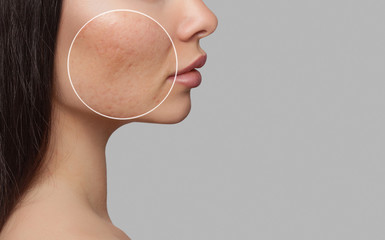Hyperpigmentation is a term used by dermatologists or skincare experts for patches of skin that appears darker than surrounding areas of skin. Hyperpigmentation include dark spots, melasma, and post-inflammatory hyperpigmentation. Each type has different causes and range of treatments including topical products and cosmetic procedures. Hyperpigmentation occurs when your skin produces excessive melanin, the pigment that provides skin its colour. This causes age spots or patches of skin to appear darker than surrounding areas. It is a common skin issue that affects people of all skin types. Some type pf hyperpigmentation including melasma sunspots and melasma are more likely to affect areas of skin that are exposed to sunrays including face, arms, and legs. Hyperpigmentation may also occur after an injury or skin inflammation, such as acne, cuts, burns, or lupus. The types of hyperpigmentation can occur anywhere on the body. Excessive melanin in some areas of skin is usually harmless, but it could be an indication another medical condition.
If you are bothered by hyperpigmentation of any kind, the absolute best thing you can do is see a dermatologist. Yes, topical treatments can help tremendously, but especially after a dermatologist’s green signal to that agent. And the treatment approach for every patient is different; the exact method your dermatologist chooses for you will depend ultimately on your skin’s condition and degree of sensitivity, and the kind of hyperpigmentation you are battling with.
Best ways to treat and reduce hyperpigmentation
- Although hyperpigmentation is harmless, some people wish to get rid of it as soon as possible. The treatment of this skin disorder tends to be a difficult and prolonged process that often takes 6 to 8 months and even more to achieve the desired depigmentation results. There is a range of possible methods and home remedies that people with different hyperpigmentation can try. A variety of treatment options have been used to treat with varying degree of success. To prevent the condition or to stop it from becoming more prominent.
- Avoid exposure to the sun rays – Wear a sunscreen with an SPF of 30 or higher to protect your skin from harmful rays of the sun and stop dark spots and melasma patches from becoming darker. It is important to understand that the sun’s UV rays may hit your skin triggers extra pigment production to defend your skin from damage. More melanin is what give you a tan look. However, excessive sun exposure can make dark sunspots and melasma appear.
- Blackheads and other injuries – The first step to preventing hyperpigmentation, avoid picking your skin. It might be tempting to scratch an injury or squeeze a stubborn blackhead, but do not pick and pay attention. Scratching or squeezing a spot may increase skin discoloration in some cases. The more you mess, with it, the worse it will look later. According to skin experts and dermatologists, melanin in brown spots can move deeper into the skin over time.
Topical Creams for Hyperpigmentation
Many people use topical treatments to treat different kinds of hyperpigmentation, including acne marks. Melasma patches, sunspots, and other blemishes. People can try various skincare products, including Melalite forte cream, which include ingredients that lighten the skin. The skincare product’s key component is hydroquinone, which works by disrupts the process that leads to skin discoloration. The cream reduces rash, itchiness, or pain associated with this condition. It effectively improves the appearance of dark patches of the skin usually caused by excessive birth control pills, hormone medicine, pregnancy, or injury to the skin. This improves your self-esteem and confidence as your skin condition changes to normal. One should always use it under the supervision of a dermatologist and only apply the amount you have been told to use.
People who wish to consider this popular skincare product should discuss the process and possible side effects with a skincare professional. Melalite forte cream is a skin essential used to lighten the dark skin patches and spots of hyperpigmentation. The topical agent’s active components reduce the amount of melanin in the skin, which reverses the skin condition. The health care professional should best advise the dose and duration because the topical formulation has a few potential side effects; however, not everyone will get them. But it is always the best idea to see a dermatologist before giving this medical cream a try.
Conclusion
If you are bothered by dark spots and melasma patches associated with hyperpigmentation on your skin, there are various options for erasing that harmless but frustrating discoloration on your skin. Start with topical Melalite forte cream containing a lightening agent- Hydroquinone. The active component help reduce hyperpigmentation by inhibiting the certain enzyme in the body responsible for the formation of skin darkening pigment-Melanin.
Also Read: Ways to Treat Skin Hyperpigmentation Naturally




